Visual Schedule Myths Live On..
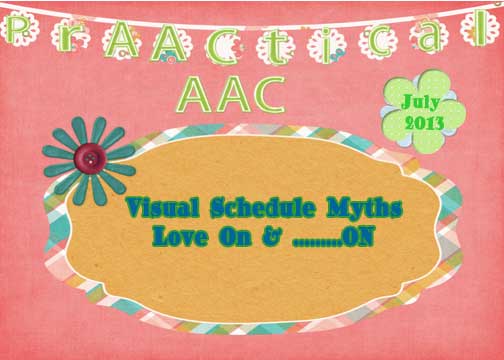
There are many myths about visual schedules for learners with special needs. Those myths multiply for older learners as well as for learners who are thought to have higher or lower skills. It is amusing to us (in a not really funny way) that these myths don’t typically extend to the SLP’s, educators, or other professionals and THEIR schedules/day planners.
We have heard a lot of visual schedule myths in the last couple of weeks, which means the topic may need some re-visiting. Here are some TRUTHS about visual schedules. Please share if these myths come up in your area.
Visual Schedules Increase INDEPENDENCE– Independence is supported when you can follow a visual schedule and do not need another person with you to tell you the steps to complete a day or a task. Independence is also facilitated when you can check for yourself when an event is happening rather than asking about it many times a day. Another aspect of independence is to teach the learner to create their own schedules as soon as possible and when there is a choice.
A Myth About Visual Schedules Lives On
A Visual Schedule Myth Lives On Again
Visual Schedules Do Not Have To Be Prepared With Velcro– Visual Schedules can be created in many different ways. They can be prepared with objects, in a day planner, with the box instructions from a recipe, in a calendar, or with a brochure. The possibilities at times seem limitless.
Object Schedules (Video)
Visual Schedules Have Many Forms & Functions- Visual schedules are more than just for daily events. There are mini-schedules, monthly schedules and more. Schedules should be age appropriate. As said above, consider more than velcro. Day planners are often great for older learners. The function of schedules is also more than about transitions. Difficulty with transitions are a great rationale for using a visual schedule for many learners. However, other rationales can include learning to talk about past and future events, decreasing repetitive question asking about the day or activities, organization skills (and more). 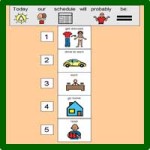
 Visual Schedules Are IMPORTANT Even When The Learner Knows The Schedule– Even when we know our schedule, it is still important to SEE it. This may be even more true for someone who is a strong visual learner or with events or times that may be anxiety producing.
Visual Schedules Are IMPORTANT Even When The Learner Knows The Schedule– Even when we know our schedule, it is still important to SEE it. This may be even more true for someone who is a strong visual learner or with events or times that may be anxiety producing.
Visual Schedules Can Help TEACH Language- Visual schedules are more than for just helping with transitions. They also serve as a language format for talking about future and past events. They can even help build flexibility by learning that schedules “change”
Visual Schedules Are For ALL Levels of Learners– We had the comment twice this week that there was no visual schedule because the learner was too ‘high functioning’ for a schedule or too old for a visual schedule. Both of these comments were made by professionals. The myth was busted for them when we asked them to give up their day planners. We have also heard that a learner is ‘too impaired’ for a schedule, which is also a myth. Teaching and prAACtice with a schedule can help ALL levels of learners to understand what will happen, what is happening, and what did happen. The only difference between learners is how visual schedules are taught and the type of visual schedule that may be used.
Ideas for Teaching Use of Visual Schedules
![]() More About Visual Schedules in Video Format
More About Visual Schedules in Video Format
Visual Schedules & Inclusion
Visual Schedules in Action
Visual Schedules at Home
Filed under: PrAACtical Thinking
Tagged With: myths AAC, visual schedules
This post was written by Robin Parker
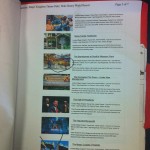



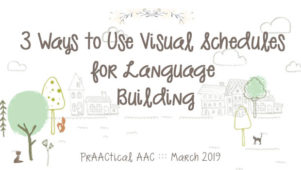
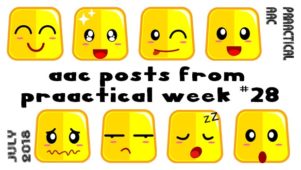
2 Comments
Great blog. I have often thought of visual schedules as I have gotten older (retired SLP) and how I rely on my iPhone calendar. I have become so accustomed to it that I have told others that if I were to reach the point where I could not remember, I could at least follow the verbal reminders on my calendar. Yes, visual schedules are for all people for different reasons. Thanks for this blog.
Could not agree more!